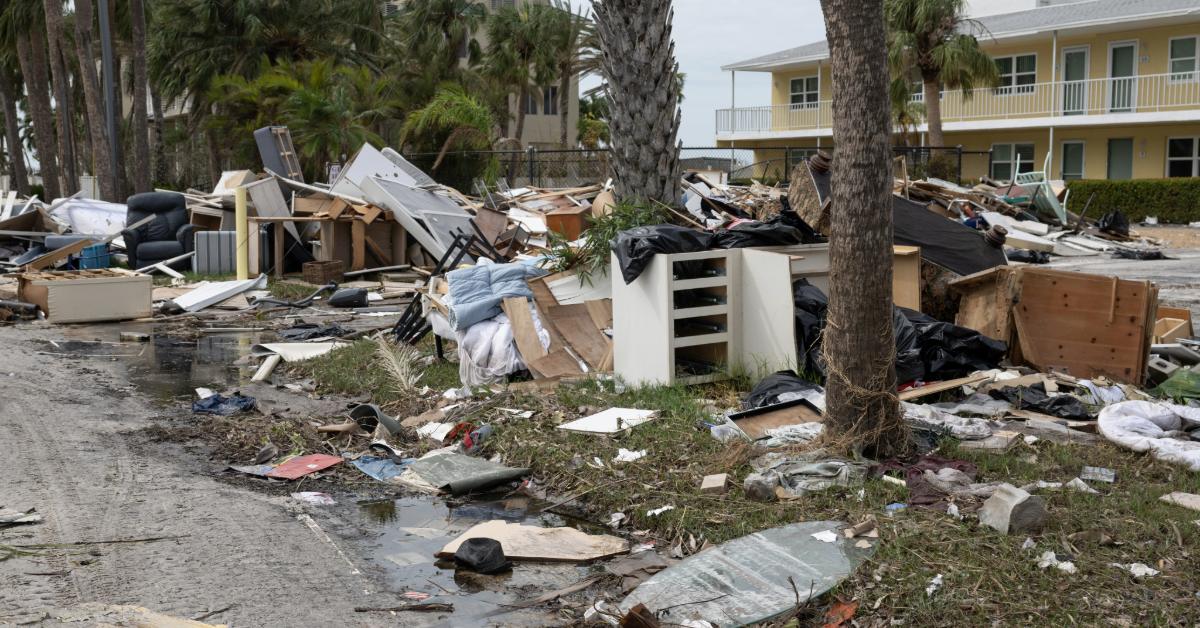
This guide is your go-to resource for understanding hurricane season—how hurricanes form, why they’re dangerous, and how to stay safe before, during, and after a storm. Whether you’re new to a hurricane-prone area or simply updating your emergency plan, you’ll find practical tips, science-backed insights, and expert guidance. From storm categories and safety prep to climate trends and recovery efforts, this guide will help you stay informed, prepared, and resilient all season long.
Let’s get started!
Table of Contents
- Section 1: Hurricane Basics
- Section 2: Hurricane Categories & Terminology
- Section 3: Dangers and Associated Hazards
- Section 4: Preparing for a Hurricane
- Section 5: During and After a Hurricane
- Section 6: Historical Context
- Heart to Heart International: A Proven Leader in Hurricane Disaster Response
- Section 7: Hurricane Season Overview
- Section 8: Climate Change and Hurricanes
- Section 9: Hurricane Forecasting & Technology
- Section 10: Supporting Relief and Recovery
- Section 11: Frequently Asked Questions (FAQs)
Section 1: Hurricane Basics
Every year, the arrival of hurricane season brings with it a mix of anticipation, anxiety, and preparation—especially for communities along the Gulf Coast, East Coast, and U.S. territories in the Atlantic basin. But hurricanes don’t only affect coastal regions; their aftermath often reaches deep inland, bringing widespread flooding, power outages, and long-term economic disruption.
What is a Hurricane?
A hurricane is a type of tropical cyclone—a powerful, rotating storm system that forms over warm ocean waters in tropical and subtropical regions. Once sustained winds in a tropical storm reach 74 mph, it is officially classified as a hurricane.
Hurricanes are categorized based on wind speed using the Saffir-Simpson Hurricane Wind Scale, ranging from Category 1 (74–95 mph winds) to Category 5 (157+ mph), with increasing potential for damage.
How Do Hurricanes Form?
Hurricanes form under a specific set of environmental conditions, most common during hurricane season, which runs from June 1 to November 30 in the Atlantic. Here’s what typically fuels hurricane development:
- Warm Ocean Water: At least 80°F to a depth of 50 meters or more.
- Moist Air: Rising warm air creates low pressure, drawing in more moisture.
- Minimal Wind Shear: Low vertical wind variation helps the storm grow vertically and maintain structure.
- Rotation: The Coriolis effect causes the storm to spin, helping it organize and intensify.
The process usually begins with a tropical disturbance, which can develop into a tropical depression, then a tropical storm, and finally a hurricane if the right conditions persist.
Why Are Hurricanes Dangerous?
Hurricanes are dangerous due to their combination of intense winds, torrential rain, and powerful storm surges. They can level buildings, flood entire communities, and displace thousands of people in a matter of hours. Even after the winds subside, hazards such as inland flooding, contaminated water, and downed power lines remain.
What is Rapid Intensification?
Rapid intensification refers to a hurricane gaining 35 mph or more in sustained winds within 24 hours. This phenomenon has become more common in recent hurricane seasons, making storms more dangerous and less predictable. Climate change and warming ocean temperatures are key contributors to this trend.
Anatomy of a Hurricane
Understanding the structure of a hurricane helps clarify where the most dangerous conditions occur:
- Eye: The calm, low-pressure center of the storm, often 20–40 miles wide.
- Eye Wall: A dense wall of thunderstorms around the eye, producing the highest winds and heaviest rain.
- Rainbands: Curving bands of storms that can stretch for hundreds of miles and bring tornadoes and flash flooding far from the storm’s center.

Section 2: Hurricane Categories & Terminology
Understanding Hurricane Categories
In the U.S., hurricanes are measured using the Saffir-Simpson Hurricane Wind Scale. This scale ranks hurricanes from Category 1 to Category 5, based on their sustained wind speeds and the level of potential damage they can cause.
Here’s a simple breakdown:
- Category 1 (74–95 mph): Minimal damage. Shingles may come off, tree branches can snap, and power may go out.
- Category 2 (96–110 mph): Moderate damage. Roofs, windows, and doors may suffer. Longer power outages likely.
- Category 3 (111–129 mph): Considered a major hurricane. Severe damage to homes and infrastructure.
- Category 4 (130–156 mph): Catastrophic. Most trees snapped, roofs lost, and areas may be uninhabitable for weeks.
- Category 5 (157+ mph): Total devastation. Major destruction of buildings, roads, and power systems.
Category 3 and above are classified as major hurricanes due to their ability to cause widespread destruction.
Key Terms You Should Know
Knowing the right terminology can help you better understand weather alerts and stay safe during hurricane season. Let’s break it down:
- Tropical Storm: A rotating system with winds between 39–73 mph. Heavy rain and some wind damage possible. It can strengthen into a hurricane.
- Tropical Cyclone: The technical term for all rotating storm systems that form over warm waters. In the Atlantic, they’re called hurricanes. Elsewhere, they might be called cyclones or typhoons.
- Typhoon vs. Hurricane: They’re the same type of storm but occur in different regions. Hurricane is used in the Atlantic and Northeast Pacific, while typhoon is used in the Northwest Pacific.
- Storm Surge: One of the deadliest threats. It’s a rise in sea level caused by wind and pressure from a hurricane. It can flood entire coastal communities.
- Hurricane Watch: Means conditions are possible. Watches are issued 48 hours before possible storm impacts.
- Hurricane Warning: Means conditions are expected. Warnings are issued 36 hours in advance. At this point, you should complete preparations and be ready to evacuate if needed.
Read: Wildfires: Causes, History, Prevention, and Recovery
Understanding these terms and categories can help you make faster, smarter decisions when a storm approaches. Always monitor trusted sources like the National Hurricane Center or NOAA for updates.
Section 3: Dangers and Associated Hazards
When a hurricane strikes, the wind isn’t the only danger. These storms bring a mix of hazards that can threaten lives, damage homes, and disrupt communities for weeks.
Wind Damage
Hurricane winds can tear roofs off buildings, snap trees in half, and send debris flying like missiles. Even a Category 1 hurricane can cause serious damage to mobile homes and power lines. Higher-category storms can flatten entire neighborhoods. The faster the wind, the more destructive the impact.
Tip: Trim trees and secure loose outdoor items before a storm hits.
Storm Surge and Coastal Flooding
This is often the deadliest part of a hurricane. A storm surge is a rapid rise in sea level caused by strong winds pushing ocean water inland. It can flood homes, sweep away cars, and cut off evacuation routes—especially in low-lying coastal areas.
According to NOAA, storm surge accounts for nearly half of all hurricane-related deaths in the U.S.
Tip: If you live near the coast and a storm surge warning is issued, evacuate immediately.
Inland Flooding
Even if you’re far from the coast, hurricanes can still reach you. Torrential rainfall from a storm can cause inland flooding, especially in flood-prone areas and along rivers. Roads wash out. Homes fill with water. Emergency services become harder to reach.
Tip: Never drive through flooded roads. “Turn around, don’t drown.”
Tornadoes, Hail, and Lightning
Hurricanes often spawn tornadoes as they move inland. These tornadoes can strike with little warning. Along with that, hail and lightning can cause additional damage to buildings, crops, and vehicles.
Tip: Monitor weather alerts even after the hurricane weakens. Severe weather can follow.
Power Outages and Infrastructure Breakdowns
Power outages are common and can last days or even weeks. Without electricity, food spoils, medical devices stop working, and communication becomes harder. Water systems and roads may also fail, especially in hard-hit areas.
Tip: Keep flashlights, backup batteries, and non-perishable food in your emergency kit.
Understanding these dangers is the first step to protecting yourself and your family during hurricane season. Each hazard brings unique risks—but with preparation, you can reduce the impact and stay safe.
Section 4: Preparing for a Hurricane
When it comes to hurricane preparedness, time is your most valuable resource—and planning ahead can save lives. Experts at FEMA, the CDC, and the National Hurricane Center all emphasize the same truth: preparation reduces risk. Below is everything you need to be fully ready before a hurricane strikes.
Create a Family Emergency Plan
Every household should have a family emergency plan—especially during hurricane season. This ensures that everyone knows what to do and where to go if a storm hits.
“The single most important thing you can do is to make a plan before you need it.” – FEMA Ready Campaign
Here’s what to include:
- Evacuation plan: Where will you go? Identify at least two locations (one nearby and one farther away).
- Meeting point: Choose a central location where your family can regroup if separated.
- Emergency contacts: Include in- and out-of-state contacts in your plan and on paper.
- Special needs: Plan for pets, seniors, infants, and family members with medical needs.
- Practice the plan: Run a drill so everyone understands what to do.
Tip: Download FEMA’s Family Emergency Communication Plan worksheet to make it easier.
Build a Complete Emergency Supply Kit
According to the American Red Cross, having a disaster supply kit increases your survival chances and reduces panic during an emergency.
You’ll need enough supplies to last at least 72 hours without help. In some cases, it may take longer for rescue or aid to arrive.
According to the American Red Cross, having a disaster supply kit increases your survival chances and reduces panic during an emergency.
Include these items in your hurricane supply kit:
- Water: 1 gallon per person per day for at least 3 days
- Non-perishable food: Canned items, protein bars, dry cereal
- Manual can opener
- Battery-powered or hand-crank radio (NOAA Weather Radio with tone alert)
- Flashlights and extra batteries
- First aid kit and prescription medications (7-day supply)
- Face masks, hand sanitizer, wipes
- Toiletries and feminine hygiene products
- Cash in small bills
- Multi-tool or Swiss Army knife
- Copies of important documents in a waterproof folder
- Sleeping bags, blankets, and extra clothing
- Chargers and backup power sources
- Pet food and supplies
- Books, puzzles, toys for children
Tip: Check your kit twice a year to replace expired items.
Prepare and Strengthen Your Home
Securing your home before a hurricane is key to minimizing damage.
Here’s how to protect it:
- Install hurricane shutters or cover windows with plywood (at least ⅝” thick)
- Reinforce garage doors to prevent wind entry
- Seal roof seams and check for loose shingles
- Clean gutters and downspouts to avoid water buildup
- Anchor fuel tanks and secure propane tanks
- Bring inside anything that could become a projectile: patio furniture, planters, tools
- Fill bathtubs with water for flushing toilets if water service is disrupted
- Turn refrigerators and freezers to coldest setting and keep them closed during outages
Tip: Take before-and-after photos of your property to assist with insurance claims.
Plan Your Evacuation Route
If you’re told to evacuate, don’t wait. Roads get congested, and conditions can worsen fast.
To be ready:
- Know your evacuation zone and routes. Find this info on your local emergency management website.
- Keep a half tank of gas in your car during hurricane season.
- If you don’t have a vehicle, pre-arrange a ride or register with local emergency services.
- Choose a destination—friend, family, shelter, or hotel—and plan alternate options.
- Store a go-bag in your car: snacks, water, charger, maps, clothes.
Tip: Always let someone know where you’re going and when you expect to arrive.
The CDC stresses the importance of preparing for evacuation well in advance, especially for vulnerable individuals and those living in mobile homes or flood zones.
Other Important Preparations
Additional steps to strengthen your readiness:
- Sign up for local alerts through your city’s emergency system or the FEMA app.
- Make sure your home insurance includes hurricane and flood coverage.
- Keep important documents (ID, insurance, deeds, medical records) in a waterproof grab-and-go folder.
- Back up digital files to the cloud or an external drive.
- Create a written inventory of valuables with photos and serial numbers.
Bonus: Store your emergency plan and kit checklist on your phone or print copies for your kit.
Preparing for a hurricane isn’t just a task—it’s an act of care and responsibility. By taking these science-backed, expert-recommended steps, you can protect yourself, your loved ones, and your home when it matters most.
Section 5: During and After a Hurricane
When a hurricane is approaching—or has just passed—your actions can make the difference between safety and danger. This section provides clear, detailed, and expert-backed guidance to help you stay protected during the storm and recover safely afterward.
What to Do During a Hurricane
- Stay indoors. Do not go outside, even if it seems calm. The eye of the hurricane may pass over your area, bringing temporary stillness, but dangerous winds will return from the opposite direction.
- Stay away from windows and glass doors. Find shelter in a small, windowless room on the lowest floor—preferably a bathroom or interior hallway.
According to the CDC and FEMA, staying in place and avoiding windows during a hurricane reduces your risk of injury from flying debris. - Do not use candles. If the power goes out, use battery-operated flashlights or lanterns to reduce fire risk.
- Keep communication devices charged and dry. Use texts instead of calls to preserve battery life.
- Listen for updates. Use a NOAA Weather Radio or emergency app to monitor the storm’s progress. Don’t rely solely on internet or television—power and cell service can fail.
How to Stay Informed (Weather Alerts & Radios)
- Sign up for emergency alerts through your local government or the FEMA app.
- Tune into NOAA Weather Radio. It’s the most reliable source of real-time alerts when other systems fail.
- Use trusted weather apps. Apps from the National Weather Service (NWS), AccuWeather, or The Weather Channel offer real-time maps and notifications.
- Pay attention to Wireless Emergency Alerts (WEAs). These are automatic alerts sent to your phone during disasters.
Tip: Have multiple sources of information. Technology can fail, but a battery-powered or hand-crank radio will keep you informed.
Safety Tips for Sheltering in Place or Evacuating
Sheltering in Place:
- Stay in your designated safe room.
- Keep your emergency supply kit close.
- Turn off propane tanks and unplug small appliances.
- Monitor flood levels if you’re in a low-lying area.
If Ordered to Evacuate:
- Leave immediately—don’t wait until conditions worsen.
- Take your go-bag, identification, medications, and pet supplies.
- Avoid flooded roads or bridges.
- Follow official evacuation routes—shortcuts may be blocked or unsafe.
FEMA warns that delayed evacuation can lead to injuries, longer emergency response times, and unnecessary fatalities.
What to Avoid After a Storm
- Avoid floodwaters. They may contain debris, sewage, sharp objects, or power lines. Six inches of moving water can knock an adult over.
- Stay clear of downed power lines. Always assume they are live and dangerous. Report them to authorities immediately.
- Don’t enter damaged buildings. Wait until local officials declare them safe. Structural damage might not be visible.
- Use caution with generators. Keep them outside and at least 20 feet from windows to avoid deadly carbon monoxide poisoning.
- Avoid tap water unless declared safe. Boil water alerts are common after hurricanes due to contamination.
According to the American Red Cross, most post-storm injuries occur during clean-up—especially from chainsaws, falls, or carbon monoxide poisoning.
Initial Steps for Recovery and Clean-up
- Check in with family and neighbors. Make sure everyone is safe and accounted for.
- Document all damage. Take photos and videos of your home, belongings, and vehicles. This will help with insurance claims.
- Call your insurance provider. Start your claim as soon as possible. Keep a written record of all communication.
- Wear protective gear. Use gloves, boots, and masks when cleaning up debris or mold. Ventilate enclosed spaces.
- Beware of scams. Only hire licensed contractors. Avoid anyone who demands cash up front.
- Seek help if needed. Contact FEMA, Red Cross, or your local emergency agency for support, shelter, and disaster aid.
The EPA recommends proper ventilation and mold cleanup within 48 hours after water damage to prevent long-term health risks. Recovery is never easy, but with careful steps and informed choices, you can navigate the days and weeks after a hurricane safely.
Section 6: Historical Context
To understand the present and prepare for the future, we must learn from the past. The United States has experienced some of the most destructive hurricanes in history, each leaving behind lessons, devastation, and advancements in how we forecast and respond.
Most Destructive Hurricanes in U.S. History
Hurricane Katrina (2005)
- Category: 3 at landfall
- Damage: $161 billion (costliest in U.S. history)
- Fatalities: Over 1,800
- Impact: Massive flooding in New Orleans due to levee failures; displaced hundreds of thousands.
Hurricane Harvey (2017)
- Category: 4 at landfall
- Damage: $125 billion
- Fatalities: 107
- Impact: Record-breaking rainfall (over 60 inches in some areas); catastrophic flooding across southeast Texas.
Hurricane Maria (2017)
- Category: 4
- Damage: $91.6 billion
- Fatalities: Estimated 2,975
- Impact: Widespread power and water outages in Puerto Rico; slow recovery efforts drew national attention.
Hurricane Andrew (1992)
- Category: 5
- Damage: $27.3 billion (at the time, the costliest ever)
- Fatalities: 65
- Impact: Devastated South Florida and parts of Louisiana; led to major changes in building codes.
Hurricane Ian (2022)
- Category: 4
- Damage: Estimated $113 billion
- Fatalities: Over 150
- Impact: Struck Florida’s Gulf Coast; historic storm surge, flooding, and wind damage.
According to NOAA’s National Centers for Environmental Information, hurricanes have caused 10 of the top 20 costliest weather disasters in U.S. history.
The Evolution of Hurricane Tracking and Forecasting
Tracking hurricanes has come a long way. In the early 20th century, forecasting was mostly guesswork, relying on ship reports and barometers. But today, it’s a different story.
Radar and satellite technology: Enabled real-time tracking and better storm prediction starting in the 1960s.
NOAA’s Hurricane Hunter aircraft: These planes fly into hurricanes to collect data on wind speed, pressure, and structure.
Computer models and simulations: Modern forecasting uses complex algorithms that predict storm paths, rainfall, and intensity changes with growing accuracy.
Smartphone alerts and apps: With push notifications and geo-targeted warnings, the public now gets faster and clearer alerts than ever before.
Storm surge modeling: Forecasting tools now simulate surge impact on specific streets and neighborhoods.
The National Hurricane Center reports that the average hurricane track forecast error has decreased by over 60% since the 1990s.
These advancements haven’t stopped hurricanes—but they have saved lives. Better forecasts give people more time to prepare and evacuate. Studying past storms also helps improve building codes, response strategies, and community resilience.
Heart to Heart International: A Proven Leader in Hurricane Disaster Response
Heart to Heart International (HHI) has long stood at the forefront of hurricane relief, delivering immediate, impactful aid to affected communities across the United States and around the globe.
Historic and Ongoing Hurricane Response
Since 2020 alone, HHI has responded to at least 15 named hurricanes, deploying Emergency Medical Teams (EMTs), equipping partner clinics, and shipping lifesaving GIK (Gifts-in-Kind) aid.
We have shipped over 200,000 pounds of medical aid valued at more than $6 million to areas impacted by hurricanes such as Dorian, Laura, Sally, Ida, Ian, Fiona, and most recently Helene and Milton in 2024. These efforts spanned five countries and multiple U.S. states and territories, including Florida, Louisiana, Georgia, Puerto Rico, and North Carolina.
- In 2024, Hurricane Helene prompted a multi-state response involving 60 shipments of medical supplies and 61,485 hygiene kits. The total value of this aid exceeded $2.2 million.
- 646,751 doses of medication for hurricanes since 2022
- A dedicated Emergency Medical Team was deployed to Waynesville, NC, providing 398 patient interactions and administering 229 tetanus vaccinations—demonstrating our boots-on-the-ground approach to care.
- Hurricane Milton resulted in a swift aid deployment valued at over $83,000, including 11,250 hygiene kits distributed across Florida.
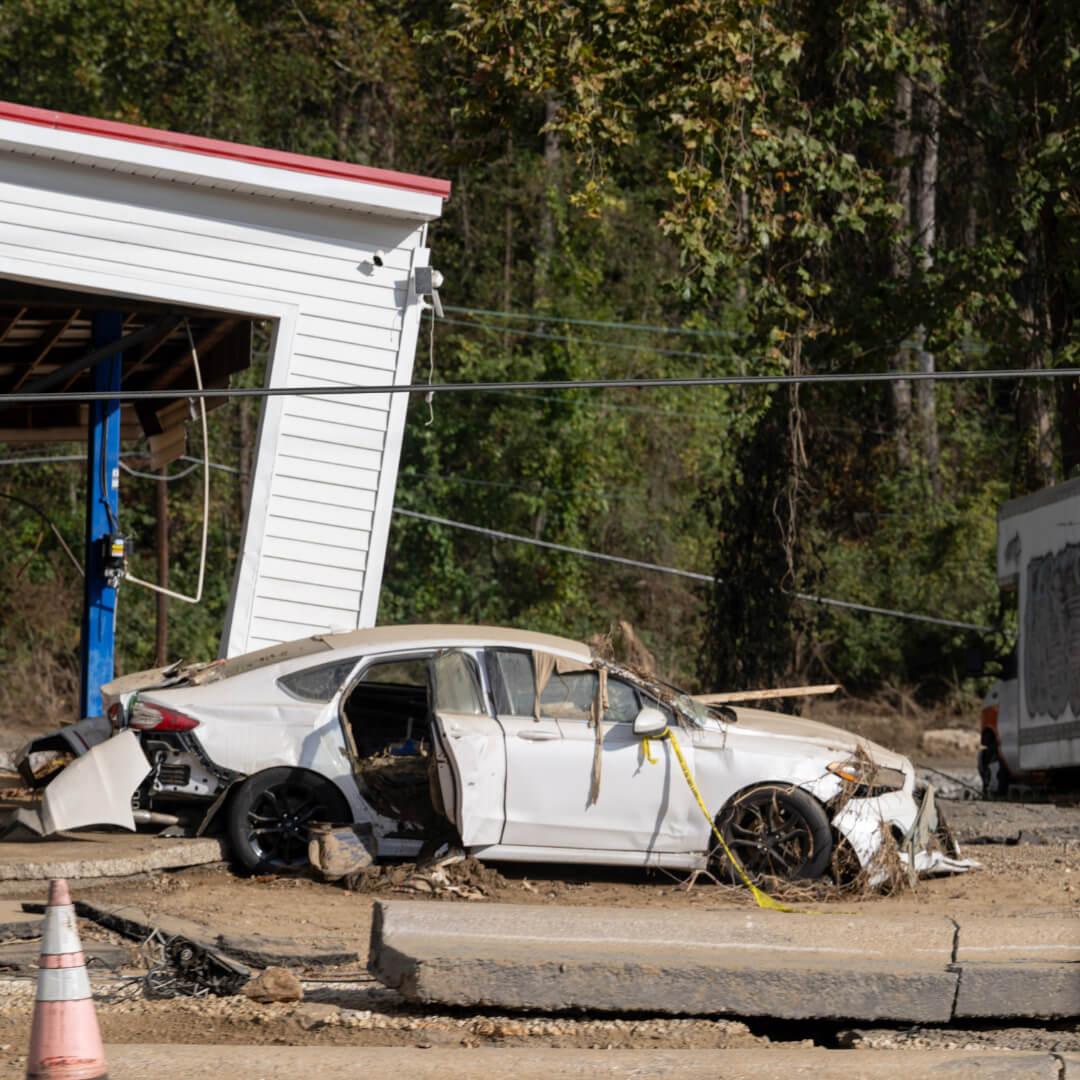
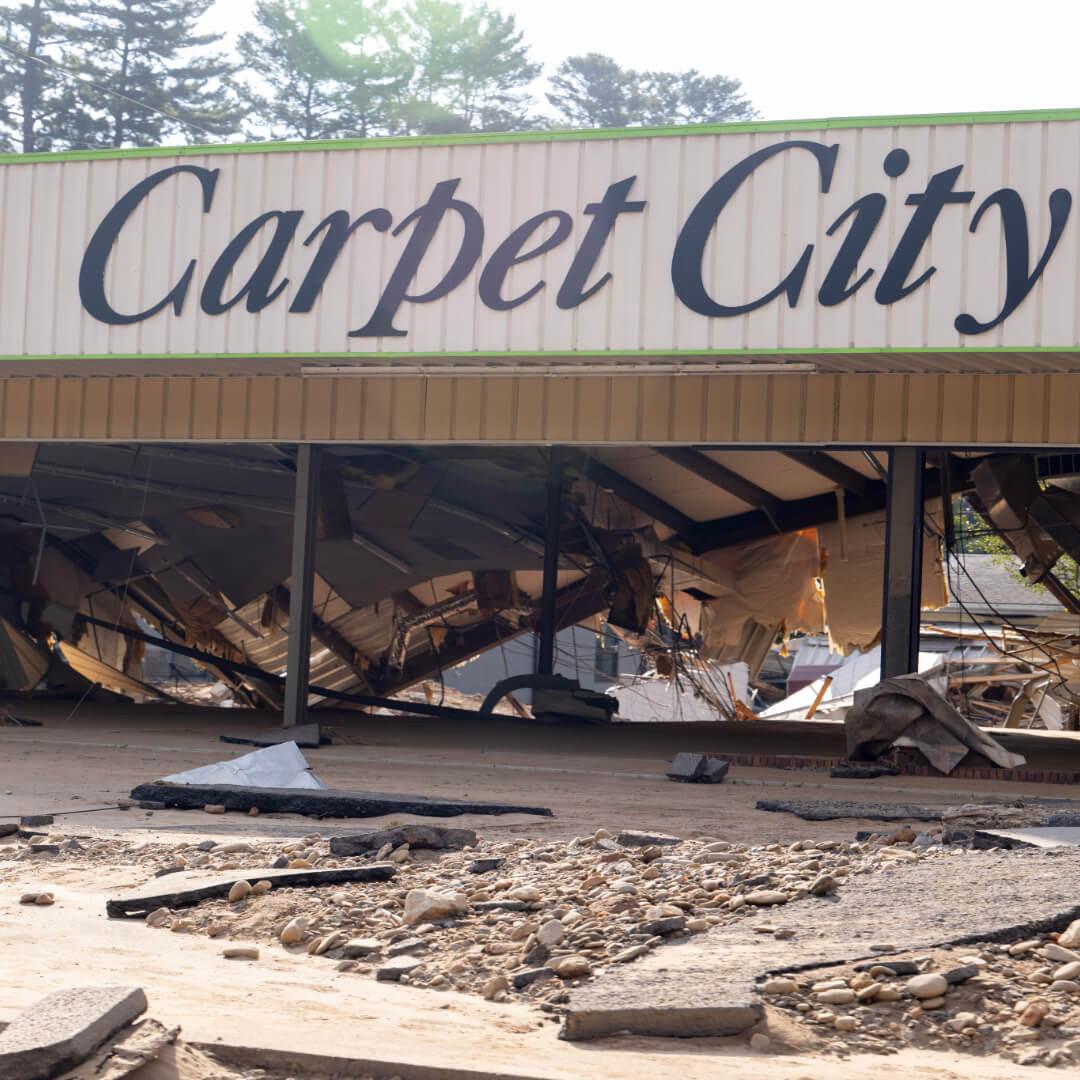
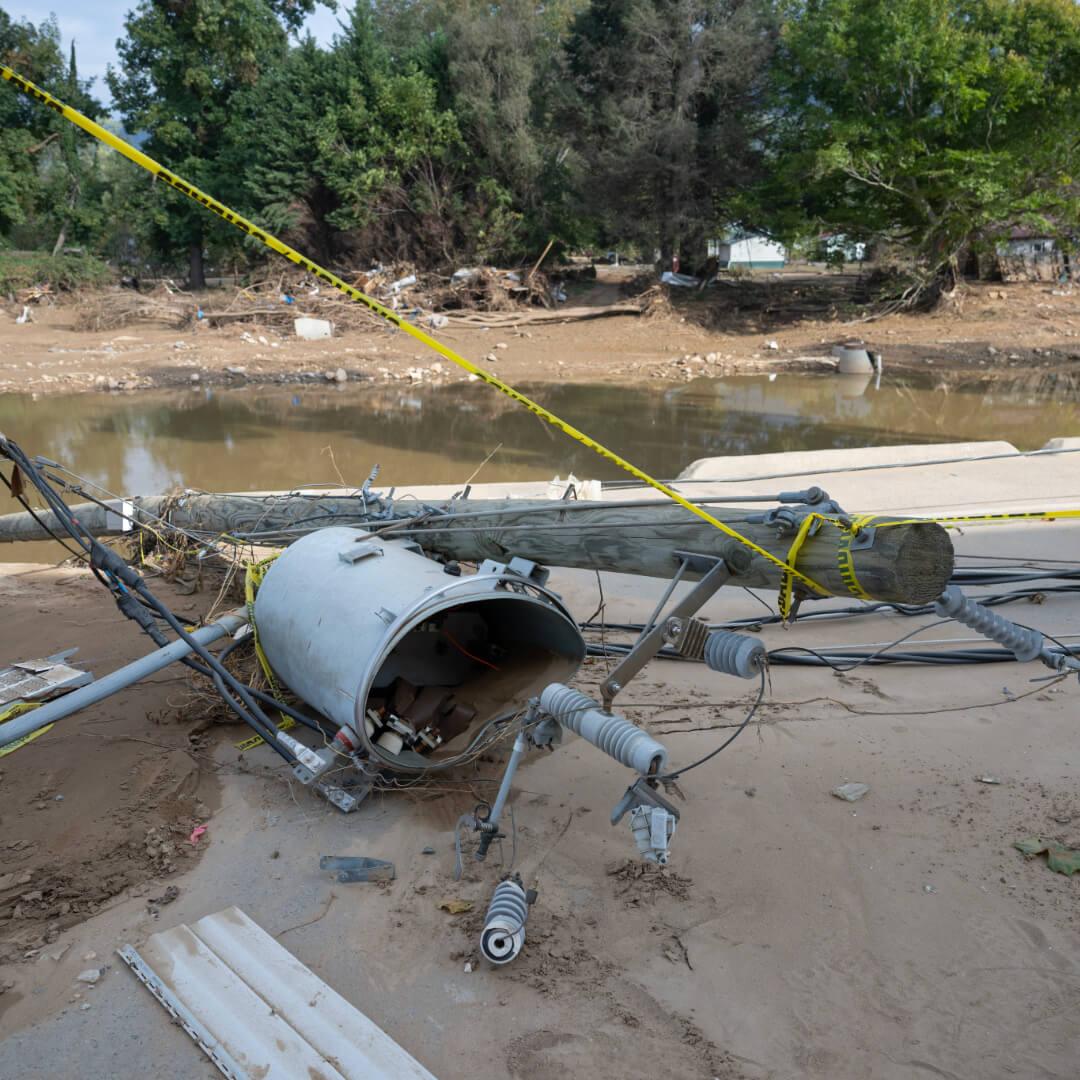
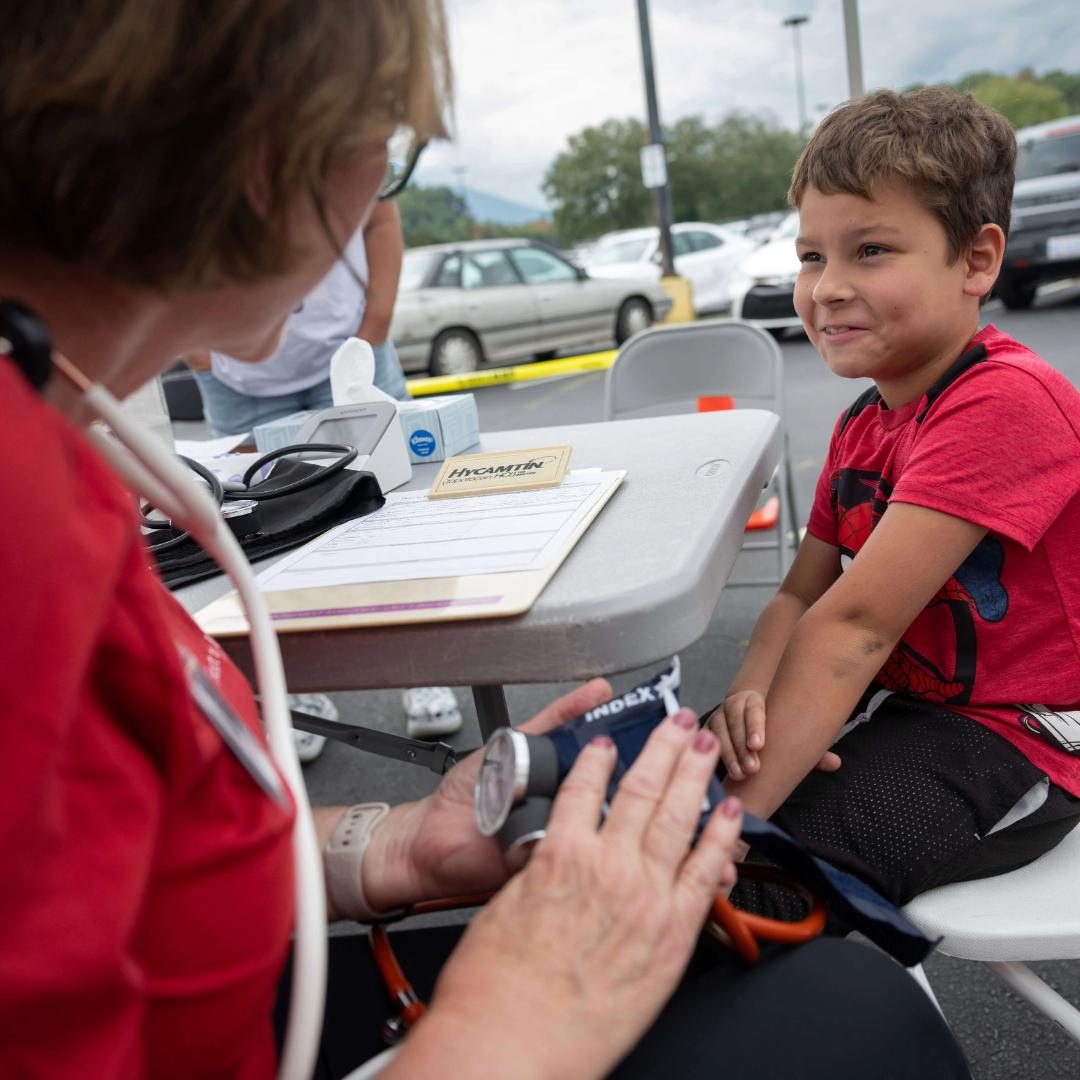
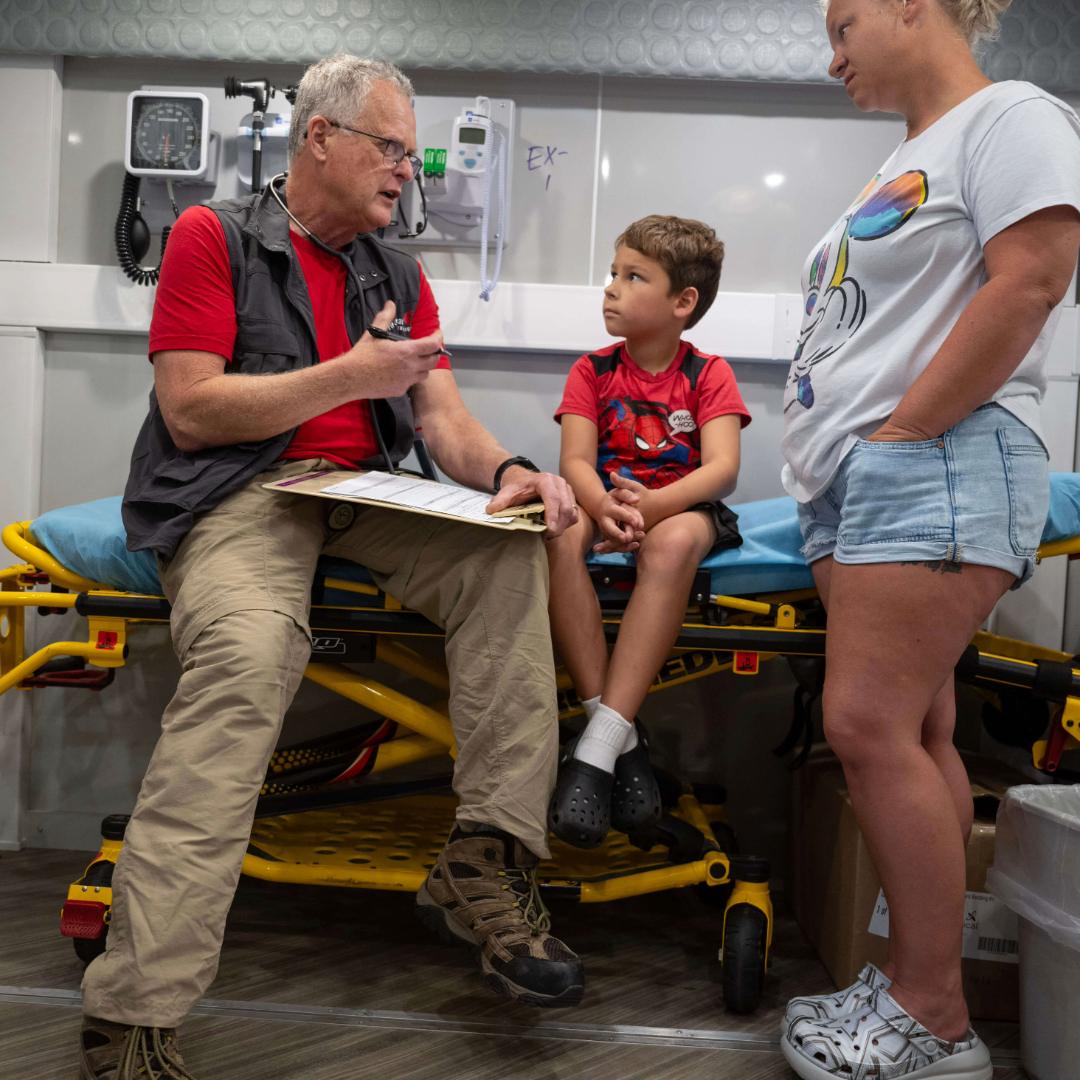
Building Health Infrastructure After the Storm
Beyond immediate relief, HHI is committed to rebuilding and strengthening healthcare access in storm-hit communities. Following Hurricanes Helene and Milton, HHI partnered with clinics in Tennessee and Florida to install Point-of-Care Labs, improving long-term diagnostic capabilities in areas prone to future climate-driven disasters.
Why Heart to Heart International?
- Global and local reach: From the Caribbean to the American South, our logistics and medical networks enable rapid deployment in response to hurricanes.
- High trust rating: Recognized by Charity Navigator and donors alike for transparency and impact.
- Proven results: With every storm, HHI delivers—whether it’s through hygiene kits, medical teams, GIK, or clinical infrastructure.
When lives are upended by hurricanes, HHI is there—first in and last out—restoring health, dignity, and hope. Your support empowers us to keep doing this critical work where it’s needed most.
Staying Disaster Ready
Heart to Heart International conducts yearly Emergency Medical Team (EMT) drills to stay prepared for deployment in the aftermath of a hurricane, or any other natural disaster.
Here’s a look at a recent EMT drill conducted by our Disaster Response team at the Heart to Heart International headquarters in Lenexa, Kansas.
Section 7: Hurricane Season Overview
When Does Hurricane Season Start, Peak, and End?
Atlantic Hurricane Season: June 1 to November 30
- This is the official hurricane season in the Atlantic Ocean, Gulf of Mexico/America, and Caribbean Sea.
Peak Activity: Mid-August to late October
- Historically, September 10 is the climatological peak. During this period, warm ocean waters and favorable atmospheric conditions make hurricanes more likely to form.
According to NOAA, 96% of major hurricanes (Category 3 or higher) occur during this peak window.
Which U.S. State Gets the Most Hurricanes?
Florida holds the record:
- Since 1851, Florida has been hit by over 120 hurricanes, more than any other state.
Other high-impact states include:
- Texas, Louisiana, North Carolina, and South Carolina.
While coastal states are most vulnerable, hurricanes can cause flooding, tornadoes, and power outages far inland too.
How are Hurricanes named?
Storm names are chosen by the World Meteorological Organization (WMO) from a rotating list used every six years. If a storm is especially deadly or costly, its name is retired.
For example, names like Katrina (2005) and Maria (2017) have been permanently retired due to their devastating impacts. Knowing the names, timing, and predictions for each hurricane season helps you plan better and act faster.
Section 8: Climate Change and Hurricanes
Climate change is reshaping the intensity, frequency, and behavior of hurricanes, especially in the U.S. coastal regions. Scientific studies and weather data over the past few decades reveal unmistakable patterns linking rising global temperatures to stronger, wetter, and longer-lasting storms.
How Rising Ocean Temperatures Fuel Hurricanes
Hurricanes gain their energy from warm ocean water. As sea surface temperatures rise—due to global warming—there is more fuel available for storms to strengthen.
According to the National Oceanic and Atmospheric Administration (NOAA), a temperature of at least 26.5°C (80°F) is needed to support hurricane formation. As the oceans warm beyond this threshold, storms intensify more quickly.
A 2020 study published in the journal Proceedings of the National Academy of Sciences (PNAS) showed that hurricanes are now more likely to reach Category 3 or higher due to warmer sea temperatures in the Atlantic Basin.
Warmer water also leads to higher moisture content in the atmosphere, which contributes to heavier rainfall and inland flooding.
“There is increasing evidence that climate change is supercharging hurricanes,” says Dr. James Kossin, climate scientist and NOAA affiliate.
Trends in Storm Frequency and Severity
The overall number of hurricanes may not be increasing dramatically, but the proportion of high-intensity storms (Categories 3, 4, and 5) has risen.
A 2022 analysis from the Nature Communications journal concluded that the frequency of Category 4 and 5 hurricanes has doubled globally since 1980.
NOAA also reports that storms are now moving more slowly over land, resulting in prolonged rainfall, as seen in Hurricane Harvey (2017). This trend leads to more localized flooding and damage.
Storm surge events are becoming more destructive due to rising sea levels, which increase the baseline water height before a storm even hits.
“It’s not just stronger winds. Climate change is making hurricanes more dangerous in every dimension,” warns Michael Mann, climate scientist and author.
What Scientists Are Predicting for the Future
Looking ahead, most climate models agree on several key predictions:
- Stronger storms: We will continue to see an increase in major hurricanes, with more storms reaching higher categories faster—sometimes within 24 to 36 hours (a phenomenon called rapid intensification).
- More rainfall: According to the Intergovernmental Panel on Climate Change (IPCC) 6th Assessment Report (2021), tropical cyclones will bring increased rainfall rates in the 21st century, especially in the U.S. Gulf and Southeast regions.
- Extended hurricane seasons: Warmer oceans may lead to longer hurricane seasons, with storms forming earlier in the year and persisting later into the fall.
- More U.S. coastal impacts: Regions along the Gulf Coast and Eastern Seaboard are expected to see more frequent and intense landfalls, making preparation and adaptation even more critical.
The IPCC concludes with high confidence that “climate change has contributed to observed increases in hurricane intensity, rainfall, and storm surge impacts.”
Understanding the connection between climate change and hurricanes empowers communities to prepare smarter, adapt infrastructure, and advocate for climate resilience. The storms are evolving—and so must our strategies for facing them.
Section 9: Hurricane Forecasting & Technology
Thanks to modern technology and decades of research, tracking and forecasting hurricanes has never been more accurate. In the U.S., organizations like NOAA and the National Hurricane Center (NHC) lead the charge with state-of-the-art tools, aircraft, and models that save lives through early warnings.
How Meteorologists Track Hurricanes
- Satellites: Geostationary satellites like GOES-East provide continuous images of storm formation, movement, and cloud structure. These visuals help meteorologists monitor storm development in real time.
- Reconnaissance Aircraft: Known as Hurricane Hunters, these specialized NOAA and U.S. Air Force planes fly directly into storms to collect data on wind speed, pressure, and temperature.
- Doppler Radar: Used when storms approach land, radar can detect rainfall intensity, wind rotation, and structure of the storm.
- Computer Models: Meteorologists use models like GFS, ECMWF, and HWRF to simulate storm tracks and intensities. These forecasts are constantly refined with new data.
- Buoys and Ocean Sensors: Weather buoys measure sea surface temperatures, pressure, and wave height—all key indicators for hurricane strength.
Best Websites and Apps for Reliable Updates
NOAA’s National Hurricane Center (NHC)
- Daily updates, forecasts, and alerts for all tropical systems
FEMA App
- Alerts, emergency preparedness info, and evacuation routes
- Official forecasts and local emergency alerts across the U.S.
The Weather Channel App
- Real-time radar, storm alerts, and interactive hurricane trackers
- Highly visual forecast maps including wind, rainfall, and storm surge
- Simple, fast radar viewing app with live updates and storm paths
Staying informed is the first step toward staying safe. Use these trusted tools and sources to monitor hurricanes throughout the season and make timely, well-informed decisions for you and your family.
Section 10: Supporting Relief and Recovery
When hurricanes strike, the aftermath can be overwhelming—for families, healthcare systems, and entire communities. But your support can make a real, tangible difference. Whether you’re able to give money, time, or resources, there are several ways you can help during and after a storm.
How to Help Others
Donate to Trusted Organizations
- Financial donations are the fastest and most flexible way to support hurricane relief.
- They allow organizations to deliver exactly what’s needed—whether it’s medical aid, hygiene kits, or emergency fuel.
- Even a small donation can provide a family with clean water, vital medications, or shelter supplies.
Tip: Make your donation go further by choosing nonprofits with high charity ratings and proven disaster experience. Check Heart to Heart International’s rating on Charity Navigator.
Volunteer Your Time
- Relief efforts need hands-on help, from assembling kits to distributing supplies.
- Skilled professionals like medics, logistics coordinators, and drivers are often in demand during recovery phases.
- Many national organizations also train disaster volunteers in advance, so you’re ready when a storm hits.
Organize a Local Supply Drive
- Coordinate with a disaster relief organization to collect needed items (hygiene products, diapers, medical supplies, etc.).
- Make sure to only send requested items to avoid overwhelming supply chains.
Important consideration: According to FEMA, “unsolicited goods” can delay relief and crowd distribution hubs. Always confirm before donating in-kind.
Heart to Heart International – A Trusted Disaster Relief Organization
When it comes to providing efficient and effective hurricane response, trust is everything.
Heart to Heart International has been a trusted force in disaster response for over three decades, delivering life-saving medical aid, hygiene supplies, and critical support to communities devastated by hurricanes across the United States and beyond.
From the Gulf Coast to the Caribbean, we’ve mobilized rapidly in the wake of storms like Hurricane Katrina, Harvey, and Ian—working closely with local clinics, shelters, and emergency teams to meet urgent health needs.
Our logistics network and medical partnerships allow us to respond quickly and efficiently, ensuring that donations translate directly into impact.
Rated highly by Charity Navigator and known for transparency and accountability, Heart to Heart International is the right choice for those who want their support to reach where it matters most. No act of generosity is too small. In the wake of a hurricane, your compassion can help rebuild lives and restore hope.
Section 11: Frequently Asked Questions (FAQs)
Here are answers to some of the most common questions on the internet about hurricanes—from how they form to what to expect during hurricane season.
Can hurricanes be prevented?
No, hurricanes cannot be prevented. They are natural weather systems fueled by warm ocean water and specific atmospheric conditions. While we can’t stop them, forecasting and preparedness help reduce their impact.
What is the difference between a hurricane and a typhoon?
The only difference is location. A hurricane occurs in the North Atlantic, Central and Eastern North Pacific. A typhoon forms in the Northwest Pacific. In the South Pacific and Indian Ocean, they’re called cyclones.
Why do some storms rapidly intensify?
Rapid intensification happens when a storm’s wind speeds increase by at least 35 mph in 24 hours. It’s caused by very warm ocean temperatures, low wind shear, and high moisture in the atmosphere. Climate change is making this phenomenon more common.
How are hurricane names retired?
When a hurricane is especially deadly or costly, its name is retired to avoid confusion and sensitivity in future seasons. This decision is made by the World Meteorological Organization (WMO).
How far inland can hurricane damage occur?
Hurricanes can cause serious damage far inland. Rain, flooding, tornadoes, and power outages have been reported hundreds of miles from where a hurricane makes landfall.
How do I know if I live in a hurricane evacuation zone?
Local emergency management agencies publish maps and alerts. You can check with your state’s emergency website or use FEMA’s app for zone information.
Can hurricanes happen outside of hurricane season?
While rare, hurricanes can form before or after the official season (June 1 to November 30) if ocean temperatures are warm enough and conditions are right.
Do hurricanes always follow their forecast track?
Not always. Forecasting has improved, but storms can still shift due to steering winds and pressure changes. It’s important to monitor updates often.
Is climate change making hurricanes worse?
Yes. Warmer ocean temperatures and rising sea levels are increasing the intensity, rainfall, and storm surge potential of hurricanes.
As hurricane season approaches, preparation and awareness are key—but so is compassion. By staying informed and supporting trusted relief efforts like those led by Heart to Heart International, you can help protect lives and bring hope to communities when they need it most.
